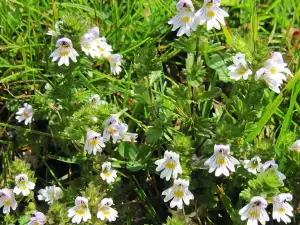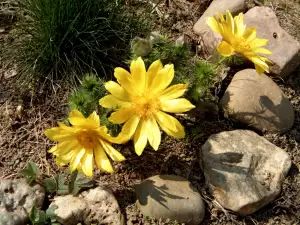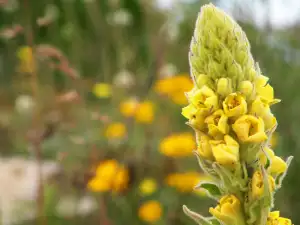Linn, also called teardrop, is an annual herbaceous plant that belongs to the Linnic family. The scientific name of Linn- Euphrasia officinalis L. comes from Greek and literally means "joy" - one of the Three Graces, which have their own amusement. The most common use of Linn are issues related to the eyes.
There is a branched stem that reaches a height of 20 cm, the flowers of the herb are white or pale pink, with beautiful purple colored lines and yellow spots. Linn can be found in meadows, pastures and thickets to 1800 meters altitude. Can be found all over Europe / without the most eastern and southern parts.
For health benefits of Linn are mentioned in 1300, it is believed that it helps sight because of the delicate petals purple lines that are likened to red eyes. Since then, the monks began to grow healing plants in their gardens. Linn was so popular that there are even verses and poems dedicated to it. In Tibetan medicine, it has long been used as a remedy for conjunctivitis and in Iceland- the juice of the herb is used to relieve pain in the eyes.
Composition of Linn
The composition of the medicinal plant comes with almost a full arsenal of useful biologically active substances. It is rich in glycosides, flavonoids, beta-carotene, mucus and bitter, fatty oils. Linn also contains blue galotanin dye, essential oils, iridoid aukubin, slight traces of alkaloids, choline, ferulic and caffeic acid, stigmasterol.
Linn is rich in B group, A and C vitamins. It contains high amounts of iron and silicon, as well as copper, zinc, manganese, nickel, chrome, silver, boron, magnesium. They all operate on the biological level and have an impact on the cause of degenerative and inflammatory changes in the vitreous and retina.
Collection and storage of Linn
The usable part of the herb is above ground. It must be dried in the shade or in the oven, but the temperature must not be higher than 40 degrees. Relative humidity during storage is about 12%.
The shelf life of cut into small parts Linn is two years and the whole herb can be kept for three years without losing its properties.
Benefits of Linn
Herbalists believe that Linn is a herb that can achieve significant results in the fight against various eye diseases. It is believed that the tannins in it act favorably on drying of mucous membranes of the eyes.

Rinsing several times a day helps in swollen and bloodshot eyes, and severe itching. The herb is used very successfully in the treatment of tired eyes, conjunctivitis, blepharitis, barley, hay fever, inflammation of the tear ducts, cataract and corneal staining.
Tannins, which are located in Linn help remedy respiratory problems. A decoction of Linn helps discharge from the lungs that has accumulated due to colds and allergies. The herb reflects very well the suffering of sinusitis.
Linn has strong anti-inflammatory and anti- allergic actions. It lowers intraocular pressure and vision as a whole. Therefore, it is widely used in ophthalmology in burning and watery eyes. Used for the prevention of eye disease, no matter what its origin.
Even with injuries to the eyes, where the cornea is affected, Linn has a favorable effect and reduces inflammation and pain. It works very well with eye fatigue, which is caused by artificial light, sunlight or fatigued from work. Linn improves blood circulation in the brain, has antispasmodic and sedative effects.
Medical use of Linn
Linn is used both externally and internally. In the folk medicine, this herb is used for ulcers, jaundice and various stomach problems. It also enhances the function of intestines and stomach, brightens and enhances appetite. Has a beneficial effect on the whole body, a great preventative for eye diseases.
The most common application of external Linn is associated with the making of the above packs for eye problems - fatigue, conjunctivitis, barley, etc. blepharitis. For the treatment of conjunctivitis and blepharitis, mix 2 cups water with 3 teaspoons Linn. The mixture is boiled, filtered and make warm baths or hot compresses for your eyes.
For internal use: in 500 ml of water, put 1 teaspoon Linn and boil for 5 minutes. Drink 50 ml four times daily, before each meal.
Dangers of Linn
Be very careful with this herb in large amounts because it is highly poisonous. Use it on prescription and follow the right doses. Not recommended for pregnant women.
Linn can cause side effects such as tearing, itching, increased sensitivity, swelling of the eyelids and visual issues. There are cases of burning and nausea after oral administration.







Comments